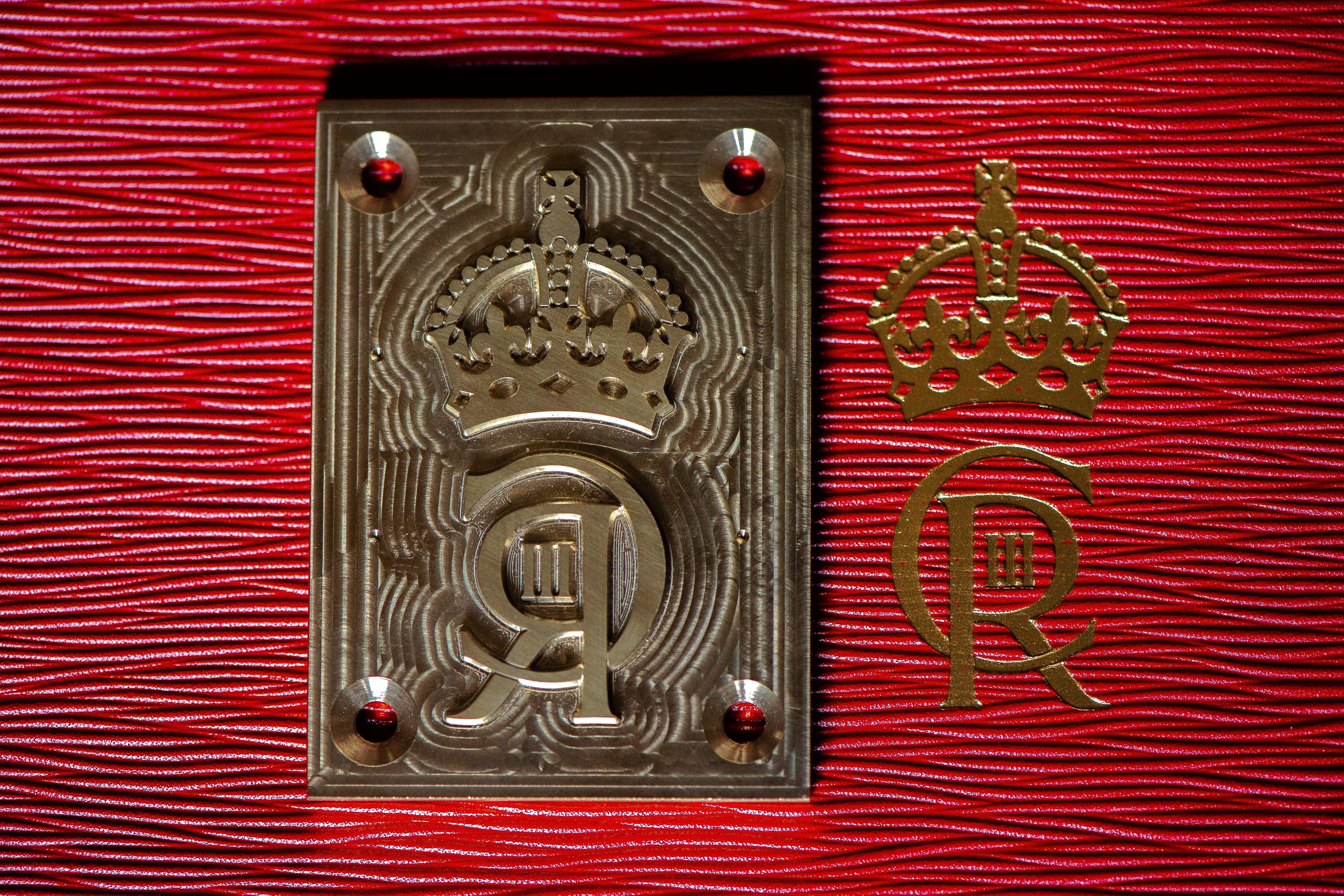Brass die will emboss King’s cypher on to famous red boxes
The die is heated up to a high temperature before being pressed on to gold leaf to make an imprint of the cypher on each box.

Your support helps us to tell the story
From reproductive rights to climate change to Big Tech, The Independent is on the ground when the story is developing. Whether it's investigating the financials of Elon Musk's pro-Trump PAC or producing our latest documentary, 'The A Word', which shines a light on the American women fighting for reproductive rights, we know how important it is to parse out the facts from the messaging.
At such a critical moment in US history, we need reporters on the ground. Your donation allows us to keep sending journalists to speak to both sides of the story.
The Independent is trusted by Americans across the entire political spectrum. And unlike many other quality news outlets, we choose not to lock Americans out of our reporting and analysis with paywalls. We believe quality journalism should be available to everyone, paid for by those who can afford it.
Your support makes all the difference.A brass engraved die has been created to emboss the King’s cypher on to the famous red despatch boxes.
The die, made by luxury British leather goods company Barrow Hepburn & Gale, which manufactures the boxes, is first made on a machine that has to run overnight to create the cypher’s intricate details.
The die is then hand-finished and hand-polished before it can be used to apply the gold leaf emboss of Charles’s cypher to his despatch boxes.
The brass die of the cypher has to be heated to a high temperature before an imprint of the cypher is applied to each of the boxes.
The cypher will feature extensively on Government despatch boxes and other official items made by Barrow Hepburn & Gale.
The King’s famous red boxes contain a range of important papers, including those that require a signature, briefing documents and information about forthcoming meetings.
Their price is never released by Barrow Hepburn & Gale.
The King is expected to receive up to a dozen or so boxes over a period of several months.
The company says on its website that its boxes “follow their holder around the world, ensuring they can execute the responsibilities of their office”.
It adds: “Wherever in the world the Sovereign or minister is, the red box is close by.
“Our despatch boxes are not only an elegant design, but are functional and secure.”
In a Facebook social media post in September 2015, the Royal Family account said the Queen received red boxes every day of her reign, including weekends, but not on Christmas Day.
The Queen was still using in 2015 the boxes which were made for her Coronation in 1953.
The post said they had been “periodically refurbished” to keep them in a good condition.
Regarding the history of the boxes, Barrow Hepburn & Gale said the modern role of boxes in the governance process “has not changed for over a century”.
It added: “There are two possible reasons why the despatch box became the iconic red colour.
“The widely-accepted reason relates to Prince Albert, Consort to Queen Victoria, who is said to have preferred the colour as it was used prominently in the arms of his family, the Saxe-Coburg-Gotha.
“However, there is a school of thought with origins dating back to the late 16th century, when Queen Elizabeth I’s representative, Francis Throckmorton, presented the Spanish Ambassador, Bernardino de Mendoza, with a specially constructed red briefcase filled with black puddings.
“It was seen as an official communication from the Queen, and so the colour red became the official colour of the state.”